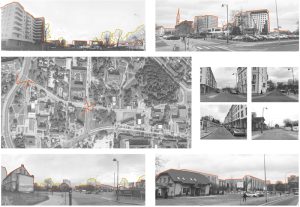Let us consider the question of scale. In this urban design project, there will be a leap to the larger scale of 1:1000 and 1:2000. We have to realize as designers that our user is still human being and it is at their scale of vision that we will perceive the designed space. Hence the importance of later visualizations showing the perception from the human level.

Urban Design Module – City Acupuncture, autors: Carolina Dantas and Valeria Tagliavini
Before we get to design, however, it is important to pay attention to the analyses. They can be schematic, and scale-free, but we should still control distances somewhere. I suggest using linear scales.

You can find different graphic styles of it on the net.
CityGo Sustainable Downtown glossary: scale
